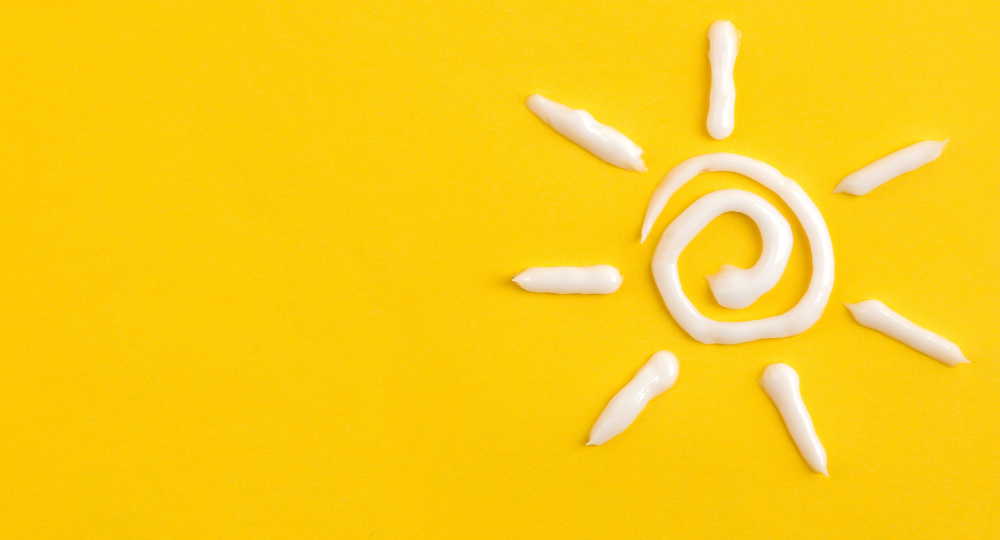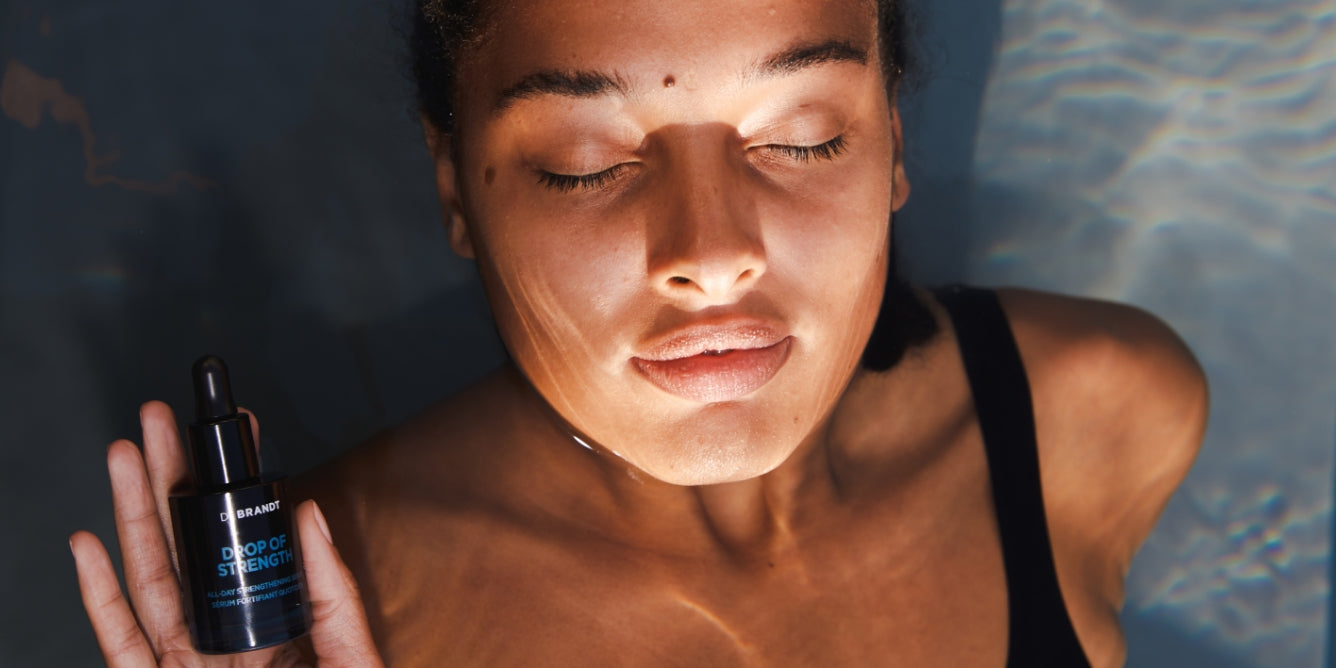
Sunscreens can be confusing - from SPF numbers to chemical vs physical or mineral - it can be a bit overwhelming. However, one thing should be 100% clear - no matter your skin type, skin tone, age, lifestyle, location or any other factor for that matter, everyone needs sunscreen! In his book, 10 minutes 10 years, Dr. Brandt wrote that four out of five wrinkles are directly caused by sun damage alone. But even more alarming, sun exposure is also the leading cause of the three most common skin cancers: melanoma, basal cell carcinoma, and squamous cell carcinoma. So, needless to say, sunscreens (with at least an SPF, or Sun Protection Factor, of 30) should be an essential in everyone’s skincare routine.
There is a plethora of sunscreens to choose from on the market. Some sunscreens are formulated for specific skin types, while others are formulated to be comfortable for daily wear or specifically for outdoor activity and can claim to be long-wear, waterproof, etc. They can also come in different formats such as sunscreen lotions, fluids, solid sticks, creams or even sprays. Some of the confusion might start when we see some sunscreens labeled as “chemical” sunscreens while others are “mineral” sunscreens. Is one better for you than the other? Why is there concern that sunscreens can be harmful to the environment if they protect skin from sun damage?
Below, we’ll take you through the difference between chemical and mineral sunscreens and how each one impacts you and the environment.
Chemical sunscreen vs mineral sunscreen: which type is thought to negatively impact the environment?
First, let’s talk about sun exposure and UV rays. UV radiation is part of the natural energy produced by the sun. On the electromagnetic spectrum, UV light has shorter wavelengths than visible light, so your eyes can’t see UV, but your skin can feel it. Tanning beds also emit UV radiation.
Most commonly seen on sunscreen product packaging is “UVA/UVB” - but what does this mean? It's simple - think A for aging and B for burning. UVA rays have longer wavelengths which are able to penetrate deeper into the dermis, where it ravages collagen and elastin and stimulates the production of pigment-producing melanocytes (these are responsible for hyperpigmentation spots, wrinkles and uneven skin tone).
About 95% of the UV rays that reach the earth are UVA rays; they maintain the same strength during the daylight hours, no matter the time of year. Throughout our lifetimes, we’re all exposed to a high level of UVA rays. UVA radiation is also the main type of light used in tanning beds, hence the controversy of tanning beds being “safe” alternatives to sunbathing. UVA rays also have the ability to penetrate through windows/glass and cloud cover, so sunscreens are important even on cloudy or raining days.
UVB rays are shorter in wavelength and don’t penetrate skin as deeply, but are responsible for suntans, sunburns and even blistering. The intensity of UVB rays can vary based on the time of day or season, but they still contribute to skin damage all year. UVB rays can be filtered so they don’t penetrate glass.
Both types of rays contribute to skin cancers.
Now let’s talk a little bit about chemical vs mineral sunscreens. Other than being formulated with different ingredients (we’ll get into that later), the main difference between chemical and mineral sunscreens is how they offer sun protection for your skin. Chemical sunscreens work like a sponge - they turn UV rays into non-damaging wavelengths of light or heat and absorb them. Mineral sunscreens, on the other hand, work like barriers on top of the skin and “reflect” UV rays, preventing them from penetrating the skin.

Scientists have discovered that some of the ingredients used in chemical sunscreens and other personal health products threaten the health of marine life, especially coral reefs and their ecosystems.
The main chemicals used in some sunscreens that can harm marine life
Oxybenzone, Benzophenone-1, Benzophenone-8, OD-PABA, 4-Methylbenzylidene camphor, 3-Benzylidene camphor, nano-Titanium dioxide, nano-Zinc oxide, Octinoxate, Octocrylene are some of the ingredients typically found in chemical sunscreens that pose threats to marine life. Some of the adverse effects on marine life include coral reef bleaching, impairing growth and photosynthesis of green algae and even accumulating in dolphins’ tissue and transferring to their young.
There are a couple ways sunscreen chemicals can enter our waterways. As we swim, the sunscreen we’ve applied may not stay on our skin (this is also why it’s commonly suggested to reapply sunscreen, especially when at the beach or pool). Sunscreen chemicals also enter waterways when you shower and rinse them off.
On January 1st 2021, Hawaii passed a law that bans the sale, offer of sale or distribution in the State of any sunscreen that contains oxybenzone or octinoxate, or both, without a prescription issued by a healthcare provider to preserve marine ecosystems.
What sunscreens are environmentally friendly and good for you
Typically, 100% mineral sunscreens are the best option for you, and the environment. A sunscreen that has only mineral filters is usually reef safe or reef friendly, safe for all skin types (some ingredients in chemical sunscreens may cause allergic reactions or may not be suitable for more sensitive skin) and protects skin from both UVA and UVB rays. It’s important to look at the active ingredients on sunscreen products. Just because a product is labeled as “natural” or “organic” does not mean it is a mineral sunscreen.

Other ways to protect yourself from the sun’s harmful rays include:
- Seeking shade or using an umbrella
- Avoiding direct sun exposure between 10am and 2pm when the sun’s rays are the strongest
- Wear a hat
- Wear UV protective sunglasses
- Wear Ultraviolet Protection Factor (UPF) sun-wear
- Consider UV window film for your home and car
The easiest way to incorporate sun protection is to make it a “way of life”. Make sure you’re protected every day, even when it’s rainy, snowy or cloudy. Make sure you’re especially protected when enjoying outdoor activity by trying some of the suggestions above, like using an umbrella, sun protective clothing and of course SPF skincare. And last, but definitely not least, try to avoid indoor tanning at all costs.




Leave a comment (all fields required)